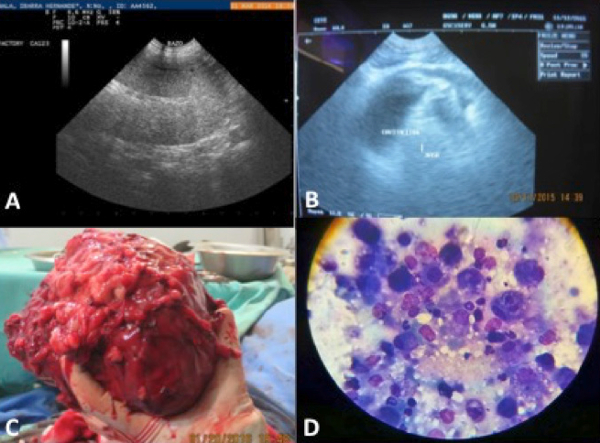Introduction
Canine chronic splenic torsion is an uncommon problem in dogs, appearing more often, but not exclusively, in deep-chested dogs. This condition is usually difficult to diagnose, because the clinical signs are intermittent and/or non-specific, and even the laboratory tests and imaging may be inconclusive, requiring an exploratory laparotomy to reach a definitive diagnosis. The prognosis is good, although later complications are relatively common.
Objectives
Raise awareness of the difficulty in establishing the diagnosis of chronic splenic torsion in dogs and mention the similarities with "wandering spleen" that occurs in humans.
Methods
A 4-year-old, unspayed female Neapolitan mastiff came with a history of intermittent abdominal pain over 2 months and a diagnosis of splenic torsion made 2 years ago (Figure1A). The owner noticed an abdominal mass that was confirmed during physical exam.
In this case, the haematological and imaging findings were inconclusive (Figure1B), so an exploratory laparotomy was performed, finding a very thin spleen covered by omentum, joined to the uterus and left ovary, and with its pedicle twisted.
Total splenectomy (Figure1C) and ovariohysterectomy were performed, and spleen samples were sent for cytology and histopathology.
Results
The cytology (Figure 1D) and the histopathologic exams of the spleen revealed granulation tissue and inflammation, compatible with splenic necrosis without signs of infection or neoplasia.
| Figure 1 | 
A and B: Ultrasonographic images of the spleen with more than one year difference between them. C, macroscopic and D, microscopic appearance of the spleen after surgery |
|
| |
Conclusion
Canine chronic splenic torsion is difficult to diagnose, but it should be considered in patients with a history of intermittent signs (even by years) of abdominal discomfort.